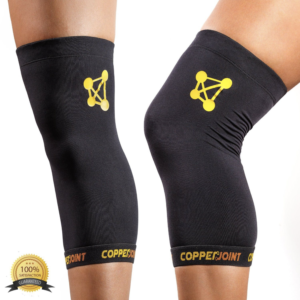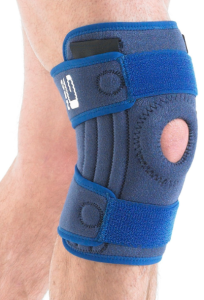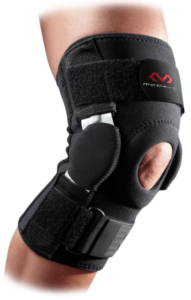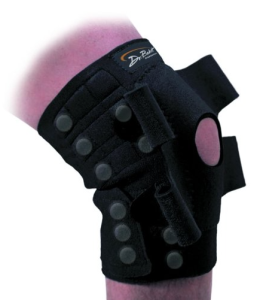The knee is yet another of the more abused joints in the body. Injuries involving the knees can get complicated as this part is composed of three important bones – the femur, tibia, and patella. All of these three work together in perfect harmony which is responsible for our normal movement.
If you have seen a diagram of the knee anatomy, you will notice the shape of the bony articulation is quite complex which literally translates to inherent stability. Do you know what makes the knee stable enough to make you walk, run, and sprint without falling down? It is the ligaments that are most responsible, and these ligaments are called anterior cruciate ligament (ACL), posterior cruciate ligament (PCL), and lateral collateral ligament (LCL).
The knee is further protected by the meniscus that acts as the shock absorber should an injury or trauma take place while the front part of the knee is covered by patella (commonly referred to as the kneecap) which also protects the knee from outside forces. If you have experienced a knee injury or someone close to you has experienced one, you probably have heard of the tears and the various ligaments and knee parts that we have mentioned above.
The Most Common Knee Injuries
Are you aware that more than 10 million patients seek the help of doctors for various knee injuries on an annual basis? In fact, a survey that was recently done indicates that knee injuries or problems are one of the most common patient complaints today.
Given the complexity of the knee and its many components, it is definitely vulnerable to many injuries such as dislocations, sprains, fractures, and ligament tears. Depending on the severity of the knee injury, treatment can range from simple measures such as bracing, splinting, and rehabilitation exercises to complex surgeries.
To give you a rundown, here are the most common knee injuries, how they happen, how to avoid them and how they are often treated:
Bursitis
Bursae are the cavities of synovial tissue that lines up the bony prominence around the knee. This most commonly becomes inflamed from chronic irritation as a result of repetitive trauma either from overuse or accidents. There could also be fluid buildup inside which may warrant aspiration.
This is more commonly referred to in the emergency room as housemaid’s knee. This is also common among runners, and the usual treatment would be icing the area and taking anti-inflammatories and wearing splints or braces. For severe cases, aspiration may be recommended.
Patella and/or Quadriceps Tendinitis
Tendinitis comes from the word tendon and inflammation. Therefore, it means inflammation of the tendon along the patella and/or the quadriceps. This is a common injury resulting from overuse and repetitive trauma as is commonly seen among volleyball and basketball players.
Symptoms for patellar and/or quadriceps tendinitis are a pain in front of the knee right over where the patella tendon is located and limited flexion with or without swelling present. Treatment is usually to rest the area until it heals along with ice and non-steroidal anti-inflammatories or NSAIDs. However, if the doctor deems that it can heal faster using a splint or a brace, it will be recommended.
Patellofemoral and chondromalacia Patella Pain
Usually manifested by pain in the front of the knee, this is quite tricky without the necessary diagnostic tests since the pain could be coming from a lot of sources including patella malalignment, osteoarthritis, chondromalacia, osteochondral fractures, bursitis, synovial plica, patella instability, and tendinitis.
If it is malalignment due to repetitive trauma, the knee would have to be rested with activity modification, ice, NSAIDs, splints, braces, and exercise program probably later on once it has been corrected and pain has subsided.
Anterior Cruciate Ligament Injuries
This is probably the most famous knee problem today with more and more people suffering from it. You have heard famous athletes and showbiz personalities suffered from this. Do you remember what happened to Kobe Bryant and how this injury sidelined him for months?
This injury to the knee is an extremely painful one given that the ligament is literally torn when the knee twists suddenly in a different direction from where the foot is planted on. You will feel a sudden pop that will probably bring you down due to pain and instability.
ACL tears, however, differ in the sense that some require operation while others do not. The use of a knee brace is highly needed, especially for non-operative cases. Depending on the severity of the tear, full recovery is possible within six to eight weeks with the proper approach. For severe cases, graft could be done with reconstructive surgery.
Meniscal Tears
This is usually a result of a twisting injury as the medial meniscus is less mobile and thus easily gets trapped between the femur and tibia. Once there is pressure from a sudden twisting movement, a tear could take place. This is commonly diagnosed by MRI and treated with activity modification with proper braces. If the tear is severe, surgical arthroscopy could be considered.
Getting to Know Knee Braces by Leveling
There are quite a number of options of how to protect your knees from injuries or prevent another injury from happening again. Braces could be used in so many ways. It can be rehabilitative, functional, and also as a preventative measure for those who know they are at higher risk for developing knee problems.
To help you better understand knee braces, let us discuss them first by their support level:
Basic Level
These are the elastic knee braces and supports that are quite simple and easy to use. They are relatively inexpensive yet provide the basic degree of support and warmth that is helpful to the knee.
Knee braces that belong to this level can be used both for short-term and long-term use. They are great for minor injuries, sprains, and strains. They are also suitable for those with ongoing knee conditions suffering from mild to moderate pain.
Conditions that will benefit from basic elastic knee braces are sprains, arthritis, cartilage irritation, bursitis, patellar tendonitis, Runners Knee, chondromalacia patella, Osgood Schlatters, and knee swelling.
Advanced Knee Braces
These provide relief, moderate support, and protection for the most common causes of knee pain today. They also are easy to use with either pull-up sleeves or Velcro straps to provide more comfort with the right level of support and compression.
These are ideal for short-term use after minor injuries and long-term use for those with ongoing knee conditions who still suffer from mild to moderate pain. Advanced knee braces usually fit snugly to provide some level of compression which supports the soft tissues, muscles, and ligaments. Also, they are commonly able to retain heat which increases circulation within the area which should promote faster healing.
Elite Orthopedic Knee Braces
This is the level that can give maximum support and protection for moderate to severe pain and even instabilities. These are highly recommended after serious knee injuries and following certain types of knee surgeries.
If you want the best protection for your knees, this would be the best there is as it offers comfort, support, sideways stability, and prevents the knee from hyperextending that could potentially cause more problems, especially in an already problematic knee.
This is recommended to those who have had moderate to severe knee problems namely moderate to severe arthritis, cartilage tears, chronic weakness, ligament injuries, and those who are recovering after knee surgeries especially ACL tears.
Understanding Knee Braces
With the increasing number of knee injuries all over the world today, more and more knee braces manufacturers continue to make and produce various styles as they deem necessary. You can say it is knee brace innovation at its finest, but to those who are experiencing knee problems, they are just thankful that there are now more choices.

CopperJoint Copper knee compression sleeve
Knee Pull-Up Sleeves
This is the simplest type of knee brace that offers compression, warmth, and support at a very modest price. They are easy to use, come in a variety of sizes, and styles as well.
- Open Sleeves – This usually has a hole in front of the knee which acts to reduce pressure through the kneecap and give some room for the knee to breathe.
- Closed Sleeves – This fully supports the whole knee which naturally paves the way for more heat retention.
- Inbuilt Stabilisers – These are ideal for those who need extra support for the knee ligaments given that it has side stabilisers.

Neo G knee brace
Wrap-Around Knee Supports
Depending on the material used and the capacity, these can provide basic and/or advanced support and protection for almost all the most common knee problems. They are extremely easy to use as well, yet provide just the right amount of compression and support.
The most common material used for this style is Velcro which makes it comfortable and adjustable. Because of this, they are ideal for those with swollen knees.

McDavid 422 Knee Brace Support with Dual Disk Hinges
Hingd Knee Bracs
This is one of the easiest ways to help knee instability and at the same time reduce pain. This type offers much more protection for the knee than wraparounds or pull-up sleeves. They offer sideway stability and prevent the knees from hyperextending.
These are known to be extremely helpful during the early stages of the recovery from severe knee injury and even surgery. However, these remain to be a great choice even for everyday use and even high-demand physical activities because of the maximum strength and protection it offers.
Magnetic Knee Braces

This is the latest invention with the knee brace itself having magnets around the knee joint region, most especially around the kneecap to reduce pain. Given that magnets have long been believed to be a great alternative for treating pain non-invasively and diminishing swelling, manufacturers thought it would be great for magnetic braces.
These are supposed to increase blood flow which should help facilitate the healing process, decrease pain, and in general promote better well-being.
Knee braces have a lot of advantages. They are used prophylactically, functionally, and for rehabilitation. As per medical experts, the functional and rehabilitative ones have proven to be the most effective. However, this would still depend on your injury and its severity.
